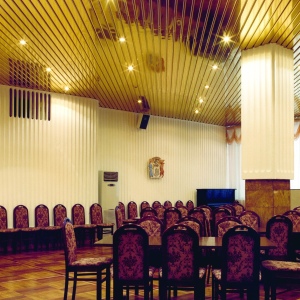Such a finishing accessory, like an outdoor plinth, is replaced by minor repair errors and technological seams between the wall and floor covering, so that the interior acquires a complete integrity. To laying the plinth, which is performed at the finishing stage of the repair work, the easiest way to attract professionals, but if you wish to master this task, you can independently.
When choosing a plinth, it is not focused on the pattern of wallpaper or color of furniture, but on the material of the floor covering. Thus, plastic strips are ideal for framing a linoleum, laminated, tile and carpet coating. If the floor is covered with a natural "cork" either by parquet, it is better to give preference to wooden samples from an array or veneer. The building market offers potential consumers a huge selection of floor plinths, but the most popular is still the profile of plastic. Such plinths are simple in laying, durable, moisture resistant and are much cheaper than wooden analogues. To determine the amount of necessary consumables (slats and fittings), you need to make a calculation according to the following scheme:- measure the perimeter of the room, add another 2 m to the resulting metro station 2 m, separated by 2.5 (this is the standard length of the plinth profile) - the rounded digit of the result and will be the desired number of planks;
- the number of necessary angular connecting elements (so-called "corners") can be found in terms of the number of indoor angles (external and internal);
- the number of conventional (straight) connectors can be calculated, based on the length of the wall wall - for every 5 m, one standard docking element is required;
- for the framing of each door box, a pair of special plinning plugs (right and left) will be required.

- in the installation of the plinth (all wires are neatly fit into special grooves located on the inner side of the planks; it is important not to damage the cable when screwing down fasteners);
- at the end of the fastening of the plinth (in this case, the screws are unscrewed by 8-10 mm, the bar is slightly moved away from the wall, the cable is laid into the formed cavity, after that the plinth is re-fixed in the desired position; if necessary, the openings of the appropriate size are cut on the knuckles input / output of cords);
- under the decorative cable-channel cover (in modern plinth models there is a special external cell, in which all the wires are laid without dismantling the planks).
As you can see, independent installation of the plinth - the problem is simple, but painstaking and requiring care, accuracy and knowledge of certain sublicties and nuances.



































